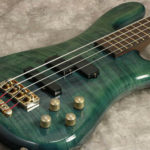
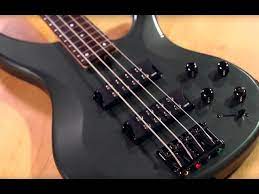
Bass - Keeping the Beat
The beat, or pulse, of the music serves as the reference point for all the other rhythms occurring in the music. All rhythm is felt in relation to the beat. All of your rhythmic skills, therefore, will rely on the ability to maintain a steady beat.
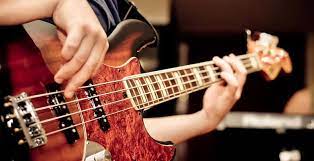
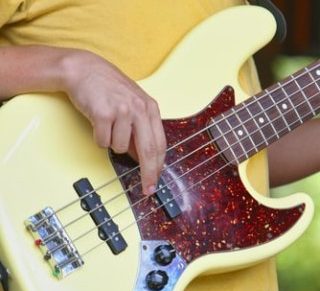
Keeping a Steady Beat
As a bassist and musician, you need to learn to keep a steady beat. This is what musicians refer to as one’s “sense of time”. Most people have a good general sense of time. As a responsible member of the rhythm section, you need to really fine-tune and develop your sense of time.
You should never rely on another musician like the drummer to help you feel where the beat is. Your internal clock needs to be independent of everyone else’s. Everyone’s independent sense of the beat should then be synchronized when playing together. Everyone should lock in with each other.
Ideally if one person is thrown off rhythmically, it should not upset everyone else’s rhythm. Additionally, that will make it that much easier for the person who does slip off the beat to jump back into the music.
Metronome
One of the best ways to check your rhythmic accuracy is to clap with a metronome. Yes, it is very boring to do. But, every clap will give you instant feedback about your rhythmic accuracy. It really works. Just doing it a few minutes a day will really help you improve your sense of time.
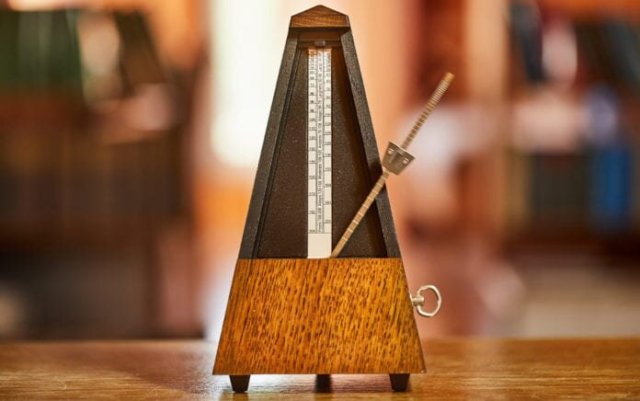
First, you need a metronome that “clicks”. It can’t beep. You will discover that when you clap accurately with the metronome the click of the metronome disappears. It almost sounds like someone turned off the metronome. Check out the example page for this lesson.
This takes a good bit of practice. You’re probably not going to be 100% accurate. You’re not a robot. But, you should shoot for accuracy in the 90%-99% range. If you’re slightly off one out of every ten claps and can jump right back in time, you’re doing pretty well.
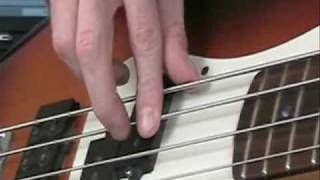
Start with a tempo around 60-70 bpm. You can do this exercise at any tempo. You’ll find slower tempos are often more challenging since there’s a wider margin of error between the beats.
Start by clapping on every other click of the metronome. It doesn’t matter how you count the beat for this exercise. Once you can make every other click disappear consistently, try clapping on every beat.
Whenever you drift off the beat, stop clapping and listen to a few beats to get your rhythm back in line.
Rushing and Dragging
Many beginners have the tendency to rush the beat. Rushing means to play (or clap) too early and speeding up the pulse as a result. The opposite of rushing the beat is dragging the beat. Dragging is where you play too late and slow the beat down.
Most of the time the student is trying too hard and slightly anticipates the beat. If you’re doing this you need to relax and focus. It may even help to try and consciously delay your clap a bit. Try and clap a little later than you want. With practice you will align your sense of time to the click.

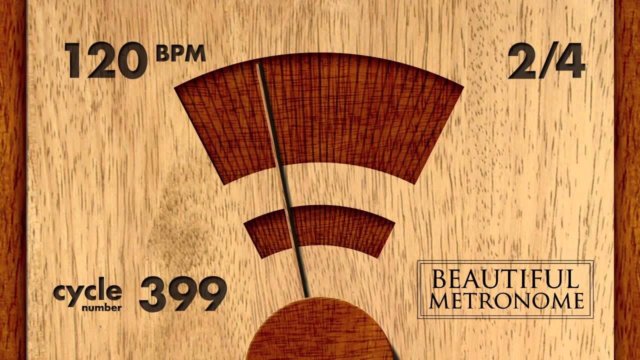
The metronome doesn’t lie. It has nothing to do with how loudly you clap. If you work at clapping with the metronome, it will make a huge difference in a short amount of time. Having the constant feedback of the metronome really helps. It keeps you rhythmically aware.
I highly recommend clapping with the metronome. I know it’s not exciting to do. Just 5 minutes a day for a few weeks works wonders.
Mechanical Metronomes
Digital Metronomes
Guitar & Gear Articles








